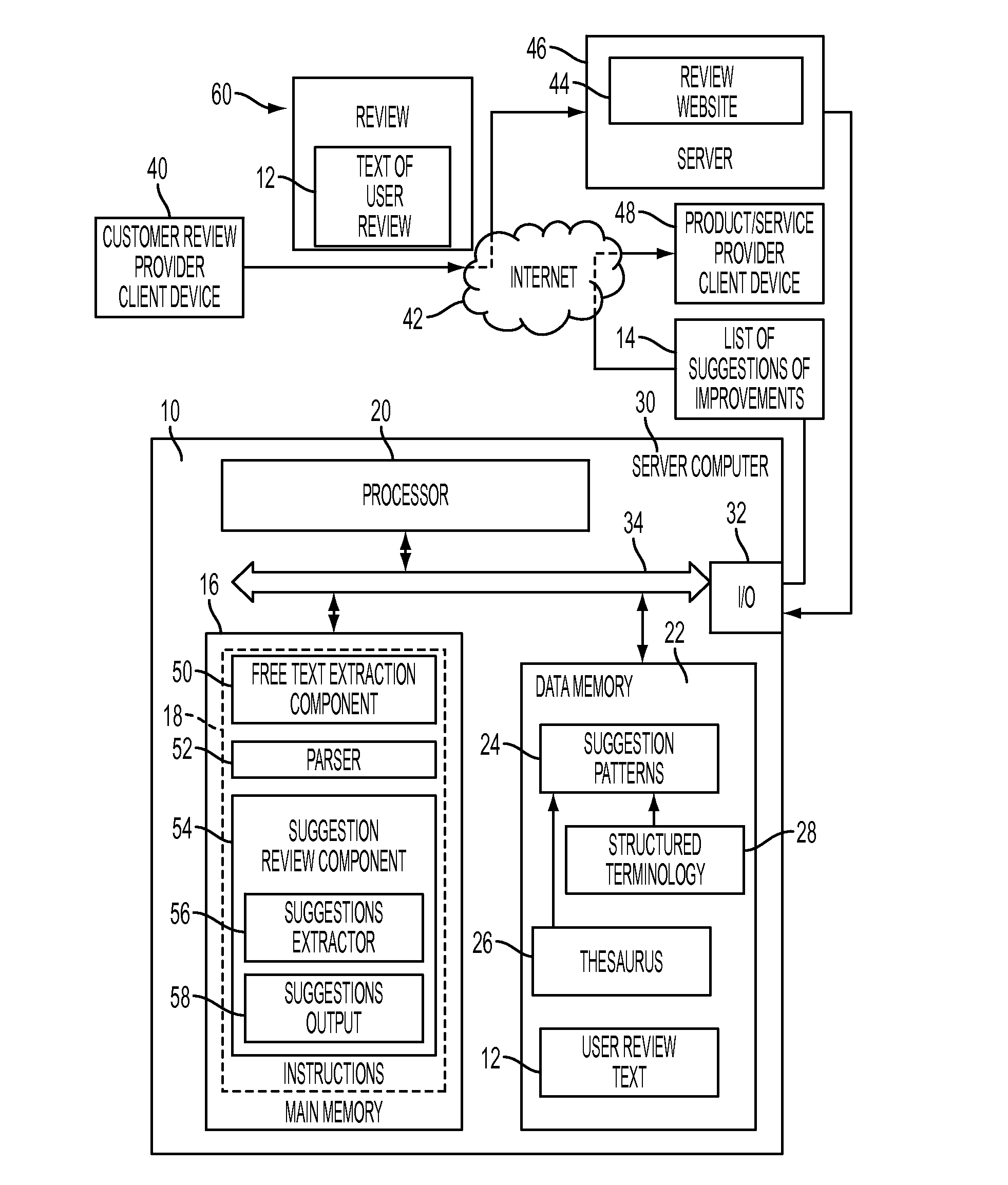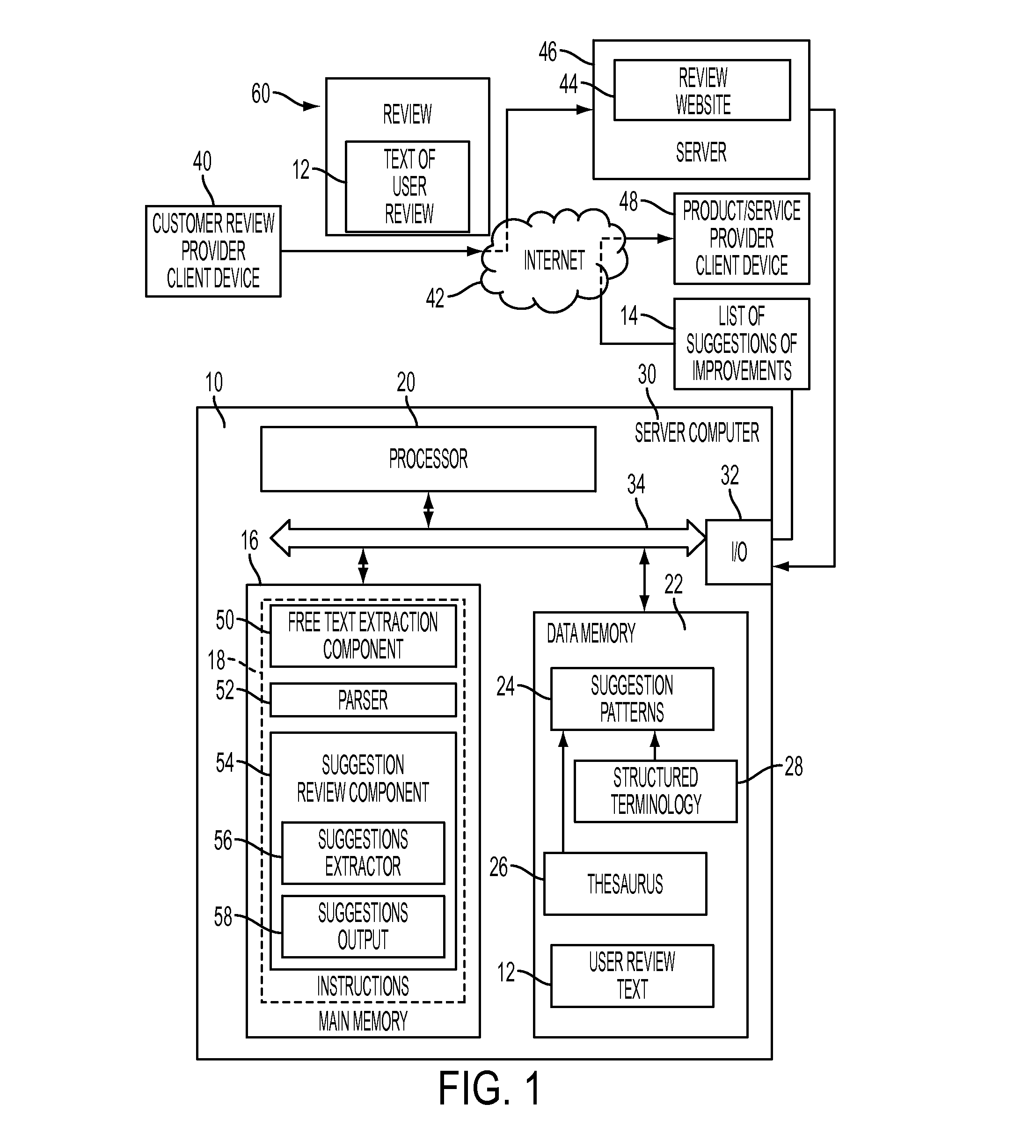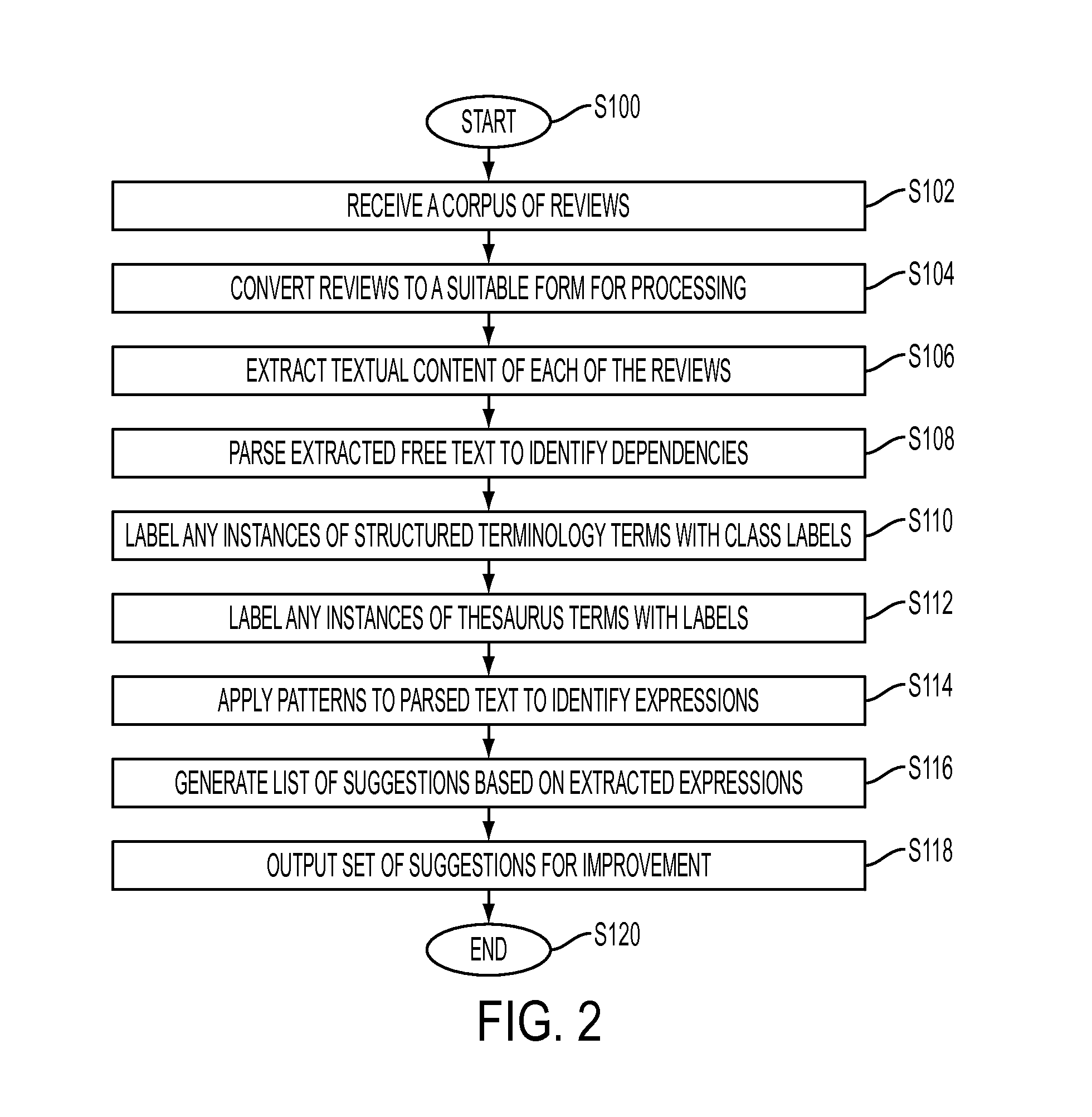System and method for suggestion mining
a suggestion mining and suggestion technology, applied in the field of information mining, can solve the problem of time-consuming and labor-intensive process of manually extracting suggestions from a corpus of reviews
- Summary
- Abstract
- Description
- Claims
- Application Information
AI Technical Summary
Benefits of technology
Problems solved by technology
Method used
Image
Examples
example 1
[0102] [SUBJECT[SEMANTIC-CLASS=MANUFACTURER]PREDICATE[TENSE=PASTASPECT=PERFECTIVEMODAL=+]]
[0103]This expresses a pattern in which a term is the subject of a predicate in which a modal verb is used in the past tense and is of the perfective aspect. The indication “+” means simply that the element (here MODAL) is present as opposed to absent.
[0104]This pattern, which corresponds semantically to a wish, extracts the relevant sentence:
[0105]ABC Co. should have made the bin deep enough
[0106]as a suggestion (SUBJECT: ABC Co., PREDICATE: should have made the bin deep enough, MODAL VERB in PAST PERFECT TENSE: should have, and the main (non-auxiliary) verb is made. The pattern does not extract the non-relevant sentence:
[0107]ABC Co. should be ashamed
[0108]This is because ashamed is not a verb in the perfective aspect.
example 2
[0109] [SUBJECT[SEMANTIC-CLASS=PRODUCT-FUNCTION]PREDICATE[SEMANTIC-CLASS=LACK]]
[0110]This expresses a pattern in which a term is the subject of a verb of the semantic class “lack”. (Although the class “lack” in the thesaurus also includes nouns, the requirement here is for it to be present in the predicate and therefore be a verb).
[0111]This pattern does not correspond to a wish as in the previous example. Rather, it expresses that something is missing in the described product, which implicitly means that the user would have liked to have this component. It extracts, for example, the relevant sentence
[0112]But the ability to terminate jobs is really lacking, often requiring a hard reset when needed.
[0113]Jobs is the part of the subject and is of the semantic type and is the subject of the predicate containing the verb is lacking. This particular pattern does not include any constraints regarding verb tense or verb aspect, since it is not found to be necessary.
example 3
[0114] [SUBJECT[PRON=+PL=+]PREDICATE[TENSE=PASTASPECT=PERFECTIVEMODAL=+]]
[0115]This pattern can be rephrased as covering a plural pronoun (in English, the word “they” or “we”), which is subject of a modal verb used in the past tense and the perfective aspect. This pattern does not place any constraint on the class of verb, i.e., it need not come from either of the classes in TABLE 2, nor on the semantic class of the subject, i.e., it does not need to come from any of the classes in TABLE 1.
[0116]As an example, this pattern will extract:
[0117]They did not make the instructions big enough
[0118]but not:
[0119]We would like a smaller printer
PUM
 Login to View More
Login to View More Abstract
Description
Claims
Application Information
 Login to View More
Login to View More - R&D
- Intellectual Property
- Life Sciences
- Materials
- Tech Scout
- Unparalleled Data Quality
- Higher Quality Content
- 60% Fewer Hallucinations
Browse by: Latest US Patents, China's latest patents, Technical Efficacy Thesaurus, Application Domain, Technology Topic, Popular Technical Reports.
© 2025 PatSnap. All rights reserved.Legal|Privacy policy|Modern Slavery Act Transparency Statement|Sitemap|About US| Contact US: help@patsnap.com



